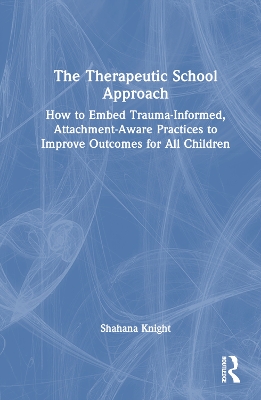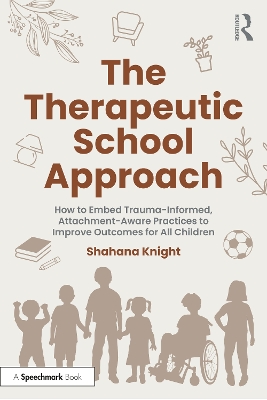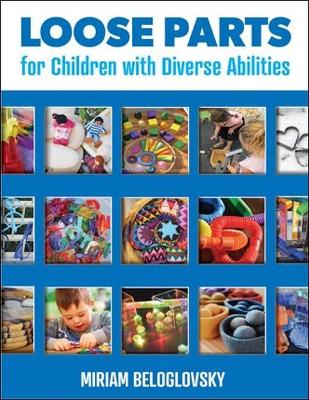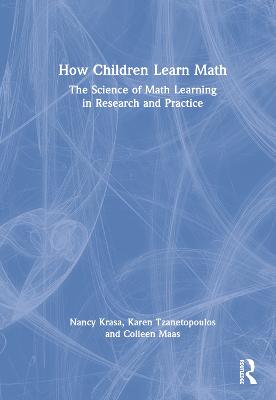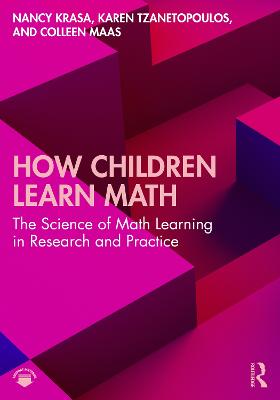Assessing Young Children in Inclusive Settings
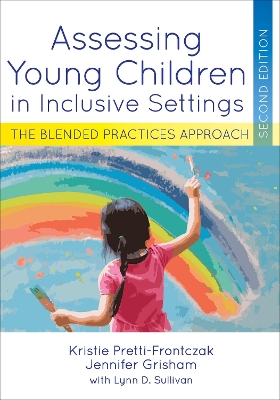 portes grátis
portes grátis
Assessing Young Children in Inclusive Settings
The Blended Practices Approach
Pretti-Frontczak, Kristie; Grisham, Jennifer; Perez, Margarita Canadas; Reese, Melanie; Blanchard, Sheresa Boone; Lynn, Sullivan
Brookes Publishing Co
11/2022
312
Mole
Inglês
9781681255996
15 a 20 dias
Descrição não disponível.
Foreword
Acknowledgements
Dedications
Section 1: Recommended Practices
Chapter 1: Introduction
Jennifer Grisham and Kristie Pretti-Frontczak
Why a Second Edition
Major Themes of this Book
??Authenticity
??Collaborative Partnerships
??Utility
??Educational Equity
Overview of Major Book Sections
??Section I: Recommended Practices (Process)
??Section II: Reasons for Conducting Assessment (Purpose)
??Section III: Special Topics in Assessment
Intended Audience and Use
Definitions of Key Terms Used Throughout
??Assessment
??Blended Practices
??Teacher
Summary
References
Chapter 2: Recommended Practices in Authentic Assessment
Kristie Pretti-Frontczak, Rebecca Crawford, Lynn Sullivan, and Jennifer Grisham
Authentic Assessment
??Authentic Assessment Defined
??Difference Between Authentic Assessment and Conventional Assessment
Advantages and Evidence-Base
??Advantages of Authentic Assessment
??Support for Authentic Assessment
Flipping the Script
Summar
References
Chapter 3: Family Involvement in the Assessment Process
Julie Harp Rutland, Ashley Lyons-Picard, Jennifer Grisham, and Kristie Pretti-Frontczak
Involving Families in the Assessment Process
??Ecological Systems Theory
??Adult Learning Theory
??Family-Centered Practices
Legal Mandates
Involving Families in the Assessment Process
??Learner
??Expert
??Team Member
??Advocate
??Benefits to Families and Children
Approaches for Gathering Assessment Information from Families
??Unstructured Approaches
??Structured Approaches
Considerations for Gathering Reliable Information from Families
??Understanding Levels of Family Involvement
??Effective Communication Strategies
??Considerate Scheduling
??Embracing Diversity, Equity, and Inclusion
??Defining Priorities
??Setting Individual Goals
??Program Planning
Summary
References
Chapter 4: Recommended Practices for Determining Technical Adequacy
Kristie Pretti-Frontczak and Jennifer Grisham
Technical Adequacy
??Validity
??Reliability
??Bias
Classification Measures
Common Practices Related to Conventional Assessment
??Calculating Chronological Age
??Establishing Basal Ceiling
??Adjusting for Prematurity
??Interpreting Results
Summary
References
Chapter 5: Critical Decision-Making Process
Lynn Sullivan, Kristie Pretti-Frontczak, and Jennifer Grisham
Overview of the Decision-Making Process
Step One: Gathering
??Guiding Principles: What to Observe
??Guiding Principles: Who Observes
??Guiding Principles: When and Where to Observe
??Guiding Principles: How Often to Observe
Step Two: Documenting
??Written Descriptions
??Visuals and Artifacts
??Counts or Tallies
Step Three: Summarizing
??Numerical Summaries
??Visual Summaries
??Narrative Summaries
Step Four: Analyzing
??Patterns
??Trends
Step Five: Interpreting
Summary
References
Appendix A: Lists of Recommended Practices for the Decision Making-Process
Section 2: Reasons for Conducting Assessments
Chapter 6: Assessment for Program Planning Purposes
Kristie Pretti-Frontczak, Jennifer Grisham, Lynn Sullivan, and Sarah Hawkins-Lear
Definition and Purpose of Assessment for Program Planning
Conducting Program Planning Assessments
??Selecting a CBA for Program Planning
??CBA Rating Rubric
??Administering CBAs
??Assessment Fidelity
??Assessment Activities
Using Information from CBAs to Program Plan
??Making Decisions for Program Planning
??Identifying Who Needs to Learn What
??Sorting Children by Outcomes
??Multi-Tiered Systems of Support
Summary
References
Appendix B: Revised Curriculum:Based Assessment Rating Rubric and Glossary
Chapter 7: Assessment for Progress Monitoring Purposes
Jennifer Grisham, Kristie Pretti-Frontczak, Ashley Lyons-Picard, Sarah Hawkins-Lear, and Lynn Sullivan
Progress Monitoring
Recommended Progress Monitoring Practices
??Holistic Appraoch to Progress Monitoring
??Progress Monitoring Decision:Making
Tiered Model of Progress Monitoring
Sharing Progress Monitoring Information
??Communicating with Families
??How and When to Share Progrss Monitoring Information
Summary
References
Chapter 8: Recommended Practices in Identifying Children for Special Services
Kristie Pretti-Frontczak and Jennifer Grisham
Child Find
??Purpose and Requirements
??Common Activities and Recommended Practices
Screening
??Traditional and Contemporary Screening Approaches
??Screening Types and Formats
Screening Types
Screening Formats
??Recommended Screening Practices
Determining Eligibility for Services
??Federal Regulations
??Federal Categories
??Developmental Delay
??State Variations
Recommended Practices for Eligibility Determination
??Transdisciplinary Teaming During Eligibility
??Report Writing
Summary
References
Chapter 9: Program Evaluation
Jennifer Grisham and Kristie Pretti-Frontczak
Types and Reasons for Conducting Program Evaluation
??Individual Classroom-Level Evaluations
??Local Program-Level Evaluations
??State-Level Evaluations
??Federal Program Evaluations
Methods of Collecting Program Evaluation Data
??Child Outcome Data
??Program Observations
??Stakeholder Input
??Record Reviews
Recommended Practices
??Planning for Program Evaluation
??Conducting a Program Evaluation
??Using Program Evaluation Data
Summary
References
Section 4: Considerations for Special Populations
Chapter 10: Recommended Practices for Assessing Children Who are Dual Language Learners (DLLs) or Multilanguage Learners
Lin Zhu, Jennifer Grisham, Kristie Pretti-Frontczak, and Ashley Lyons-Picard
General Considerations for Assessing Children Who are DLLs or Multilanguage Learners
??Challenges of Assessing Children Who are DLLs or Multilanguage Learners
Special Recommendations
??What to Assess
??How to Assess
??Influences and Biases
??Intechangeable Cuing Systems
??Alternative, Flexible Materials
??Alternative Responses
Measures
Summary
References
Chapter 11: Recommended Practices for Assessing Children with Severe and Multiple Disabilities
Jennifer Grisham, Ashley Lyons-Picard, and Kristie Pretti-Frontczak
Transdisciplinary Teaming
General Considerations for Assessing Children with Severe and Multiple Disabilities
??Children with Complex Medical Needs
Special Recommendations
??What to Assess
??How to Assess
??Influences and Biases
??Interchangeable Cuing Systems
??Alternative, Flexible Materials
??Alternative Responses
Measures
Summary
References
Chapter 12: Kindergarten Assessment
Julie Rutland, Jennifer Grisham, Lynn Sullivan, and Kristie Pretti-Frontczak
Kindergarten Readiness and Kindergarten Assessment
Timely Referrals and Tiered Instruction
Program Planning in Kindergarten Classrooms
??Curriculum Based Measures
??Curriculum Bases Assessments
Summary
References
Index
Acknowledgements
Dedications
Section 1: Recommended Practices
Chapter 1: Introduction
Jennifer Grisham and Kristie Pretti-Frontczak
Why a Second Edition
Major Themes of this Book
??Authenticity
??Collaborative Partnerships
??Utility
??Educational Equity
Overview of Major Book Sections
??Section I: Recommended Practices (Process)
??Section II: Reasons for Conducting Assessment (Purpose)
??Section III: Special Topics in Assessment
Intended Audience and Use
Definitions of Key Terms Used Throughout
??Assessment
??Blended Practices
??Teacher
Summary
References
Chapter 2: Recommended Practices in Authentic Assessment
Kristie Pretti-Frontczak, Rebecca Crawford, Lynn Sullivan, and Jennifer Grisham
Authentic Assessment
??Authentic Assessment Defined
??Difference Between Authentic Assessment and Conventional Assessment
Advantages and Evidence-Base
??Advantages of Authentic Assessment
??Support for Authentic Assessment
Flipping the Script
Summar
References
Chapter 3: Family Involvement in the Assessment Process
Julie Harp Rutland, Ashley Lyons-Picard, Jennifer Grisham, and Kristie Pretti-Frontczak
Involving Families in the Assessment Process
??Ecological Systems Theory
??Adult Learning Theory
??Family-Centered Practices
Legal Mandates
Involving Families in the Assessment Process
??Learner
??Expert
??Team Member
??Advocate
??Benefits to Families and Children
Approaches for Gathering Assessment Information from Families
??Unstructured Approaches
??Structured Approaches
Considerations for Gathering Reliable Information from Families
??Understanding Levels of Family Involvement
??Effective Communication Strategies
??Considerate Scheduling
??Embracing Diversity, Equity, and Inclusion
??Defining Priorities
??Setting Individual Goals
??Program Planning
Summary
References
Chapter 4: Recommended Practices for Determining Technical Adequacy
Kristie Pretti-Frontczak and Jennifer Grisham
Technical Adequacy
??Validity
??Reliability
??Bias
Classification Measures
Common Practices Related to Conventional Assessment
??Calculating Chronological Age
??Establishing Basal Ceiling
??Adjusting for Prematurity
??Interpreting Results
Summary
References
Chapter 5: Critical Decision-Making Process
Lynn Sullivan, Kristie Pretti-Frontczak, and Jennifer Grisham
Overview of the Decision-Making Process
Step One: Gathering
??Guiding Principles: What to Observe
??Guiding Principles: Who Observes
??Guiding Principles: When and Where to Observe
??Guiding Principles: How Often to Observe
Step Two: Documenting
??Written Descriptions
??Visuals and Artifacts
??Counts or Tallies
Step Three: Summarizing
??Numerical Summaries
??Visual Summaries
??Narrative Summaries
Step Four: Analyzing
??Patterns
??Trends
Step Five: Interpreting
Summary
References
Appendix A: Lists of Recommended Practices for the Decision Making-Process
Section 2: Reasons for Conducting Assessments
Chapter 6: Assessment for Program Planning Purposes
Kristie Pretti-Frontczak, Jennifer Grisham, Lynn Sullivan, and Sarah Hawkins-Lear
Definition and Purpose of Assessment for Program Planning
Conducting Program Planning Assessments
??Selecting a CBA for Program Planning
??CBA Rating Rubric
??Administering CBAs
??Assessment Fidelity
??Assessment Activities
Using Information from CBAs to Program Plan
??Making Decisions for Program Planning
??Identifying Who Needs to Learn What
??Sorting Children by Outcomes
??Multi-Tiered Systems of Support
Summary
References
Appendix B: Revised Curriculum:Based Assessment Rating Rubric and Glossary
Chapter 7: Assessment for Progress Monitoring Purposes
Jennifer Grisham, Kristie Pretti-Frontczak, Ashley Lyons-Picard, Sarah Hawkins-Lear, and Lynn Sullivan
Progress Monitoring
Recommended Progress Monitoring Practices
??Holistic Appraoch to Progress Monitoring
??Progress Monitoring Decision:Making
Tiered Model of Progress Monitoring
Sharing Progress Monitoring Information
??Communicating with Families
??How and When to Share Progrss Monitoring Information
Summary
References
Chapter 8: Recommended Practices in Identifying Children for Special Services
Kristie Pretti-Frontczak and Jennifer Grisham
Child Find
??Purpose and Requirements
??Common Activities and Recommended Practices
Screening
??Traditional and Contemporary Screening Approaches
??Screening Types and Formats
Screening Types
Screening Formats
??Recommended Screening Practices
Determining Eligibility for Services
??Federal Regulations
??Federal Categories
??Developmental Delay
??State Variations
Recommended Practices for Eligibility Determination
??Transdisciplinary Teaming During Eligibility
??Report Writing
Summary
References
Chapter 9: Program Evaluation
Jennifer Grisham and Kristie Pretti-Frontczak
Types and Reasons for Conducting Program Evaluation
??Individual Classroom-Level Evaluations
??Local Program-Level Evaluations
??State-Level Evaluations
??Federal Program Evaluations
Methods of Collecting Program Evaluation Data
??Child Outcome Data
??Program Observations
??Stakeholder Input
??Record Reviews
Recommended Practices
??Planning for Program Evaluation
??Conducting a Program Evaluation
??Using Program Evaluation Data
Summary
References
Section 4: Considerations for Special Populations
Chapter 10: Recommended Practices for Assessing Children Who are Dual Language Learners (DLLs) or Multilanguage Learners
Lin Zhu, Jennifer Grisham, Kristie Pretti-Frontczak, and Ashley Lyons-Picard
General Considerations for Assessing Children Who are DLLs or Multilanguage Learners
??Challenges of Assessing Children Who are DLLs or Multilanguage Learners
Special Recommendations
??What to Assess
??How to Assess
??Influences and Biases
??Intechangeable Cuing Systems
??Alternative, Flexible Materials
??Alternative Responses
Measures
Summary
References
Chapter 11: Recommended Practices for Assessing Children with Severe and Multiple Disabilities
Jennifer Grisham, Ashley Lyons-Picard, and Kristie Pretti-Frontczak
Transdisciplinary Teaming
General Considerations for Assessing Children with Severe and Multiple Disabilities
??Children with Complex Medical Needs
Special Recommendations
??What to Assess
??How to Assess
??Influences and Biases
??Interchangeable Cuing Systems
??Alternative, Flexible Materials
??Alternative Responses
Measures
Summary
References
Chapter 12: Kindergarten Assessment
Julie Rutland, Jennifer Grisham, Lynn Sullivan, and Kristie Pretti-Frontczak
Kindergarten Readiness and Kindergarten Assessment
Timely Referrals and Tiered Instruction
Program Planning in Kindergarten Classrooms
??Curriculum Based Measures
??Curriculum Bases Assessments
Summary
References
Index
Este título pertence ao(s) assunto(s) indicados(s). Para ver outros títulos clique no assunto desejado.
inclusion; inclusive classrooms; special education; blended practices; UDL; MTSS; assessment; screening; data-based
Foreword
Acknowledgements
Dedications
Section 1: Recommended Practices
Chapter 1: Introduction
Jennifer Grisham and Kristie Pretti-Frontczak
Why a Second Edition
Major Themes of this Book
??Authenticity
??Collaborative Partnerships
??Utility
??Educational Equity
Overview of Major Book Sections
??Section I: Recommended Practices (Process)
??Section II: Reasons for Conducting Assessment (Purpose)
??Section III: Special Topics in Assessment
Intended Audience and Use
Definitions of Key Terms Used Throughout
??Assessment
??Blended Practices
??Teacher
Summary
References
Chapter 2: Recommended Practices in Authentic Assessment
Kristie Pretti-Frontczak, Rebecca Crawford, Lynn Sullivan, and Jennifer Grisham
Authentic Assessment
??Authentic Assessment Defined
??Difference Between Authentic Assessment and Conventional Assessment
Advantages and Evidence-Base
??Advantages of Authentic Assessment
??Support for Authentic Assessment
Flipping the Script
Summar
References
Chapter 3: Family Involvement in the Assessment Process
Julie Harp Rutland, Ashley Lyons-Picard, Jennifer Grisham, and Kristie Pretti-Frontczak
Involving Families in the Assessment Process
??Ecological Systems Theory
??Adult Learning Theory
??Family-Centered Practices
Legal Mandates
Involving Families in the Assessment Process
??Learner
??Expert
??Team Member
??Advocate
??Benefits to Families and Children
Approaches for Gathering Assessment Information from Families
??Unstructured Approaches
??Structured Approaches
Considerations for Gathering Reliable Information from Families
??Understanding Levels of Family Involvement
??Effective Communication Strategies
??Considerate Scheduling
??Embracing Diversity, Equity, and Inclusion
??Defining Priorities
??Setting Individual Goals
??Program Planning
Summary
References
Chapter 4: Recommended Practices for Determining Technical Adequacy
Kristie Pretti-Frontczak and Jennifer Grisham
Technical Adequacy
??Validity
??Reliability
??Bias
Classification Measures
Common Practices Related to Conventional Assessment
??Calculating Chronological Age
??Establishing Basal Ceiling
??Adjusting for Prematurity
??Interpreting Results
Summary
References
Chapter 5: Critical Decision-Making Process
Lynn Sullivan, Kristie Pretti-Frontczak, and Jennifer Grisham
Overview of the Decision-Making Process
Step One: Gathering
??Guiding Principles: What to Observe
??Guiding Principles: Who Observes
??Guiding Principles: When and Where to Observe
??Guiding Principles: How Often to Observe
Step Two: Documenting
??Written Descriptions
??Visuals and Artifacts
??Counts or Tallies
Step Three: Summarizing
??Numerical Summaries
??Visual Summaries
??Narrative Summaries
Step Four: Analyzing
??Patterns
??Trends
Step Five: Interpreting
Summary
References
Appendix A: Lists of Recommended Practices for the Decision Making-Process
Section 2: Reasons for Conducting Assessments
Chapter 6: Assessment for Program Planning Purposes
Kristie Pretti-Frontczak, Jennifer Grisham, Lynn Sullivan, and Sarah Hawkins-Lear
Definition and Purpose of Assessment for Program Planning
Conducting Program Planning Assessments
??Selecting a CBA for Program Planning
??CBA Rating Rubric
??Administering CBAs
??Assessment Fidelity
??Assessment Activities
Using Information from CBAs to Program Plan
??Making Decisions for Program Planning
??Identifying Who Needs to Learn What
??Sorting Children by Outcomes
??Multi-Tiered Systems of Support
Summary
References
Appendix B: Revised Curriculum:Based Assessment Rating Rubric and Glossary
Chapter 7: Assessment for Progress Monitoring Purposes
Jennifer Grisham, Kristie Pretti-Frontczak, Ashley Lyons-Picard, Sarah Hawkins-Lear, and Lynn Sullivan
Progress Monitoring
Recommended Progress Monitoring Practices
??Holistic Appraoch to Progress Monitoring
??Progress Monitoring Decision:Making
Tiered Model of Progress Monitoring
Sharing Progress Monitoring Information
??Communicating with Families
??How and When to Share Progrss Monitoring Information
Summary
References
Chapter 8: Recommended Practices in Identifying Children for Special Services
Kristie Pretti-Frontczak and Jennifer Grisham
Child Find
??Purpose and Requirements
??Common Activities and Recommended Practices
Screening
??Traditional and Contemporary Screening Approaches
??Screening Types and Formats
Screening Types
Screening Formats
??Recommended Screening Practices
Determining Eligibility for Services
??Federal Regulations
??Federal Categories
??Developmental Delay
??State Variations
Recommended Practices for Eligibility Determination
??Transdisciplinary Teaming During Eligibility
??Report Writing
Summary
References
Chapter 9: Program Evaluation
Jennifer Grisham and Kristie Pretti-Frontczak
Types and Reasons for Conducting Program Evaluation
??Individual Classroom-Level Evaluations
??Local Program-Level Evaluations
??State-Level Evaluations
??Federal Program Evaluations
Methods of Collecting Program Evaluation Data
??Child Outcome Data
??Program Observations
??Stakeholder Input
??Record Reviews
Recommended Practices
??Planning for Program Evaluation
??Conducting a Program Evaluation
??Using Program Evaluation Data
Summary
References
Section 4: Considerations for Special Populations
Chapter 10: Recommended Practices for Assessing Children Who are Dual Language Learners (DLLs) or Multilanguage Learners
Lin Zhu, Jennifer Grisham, Kristie Pretti-Frontczak, and Ashley Lyons-Picard
General Considerations for Assessing Children Who are DLLs or Multilanguage Learners
??Challenges of Assessing Children Who are DLLs or Multilanguage Learners
Special Recommendations
??What to Assess
??How to Assess
??Influences and Biases
??Intechangeable Cuing Systems
??Alternative, Flexible Materials
??Alternative Responses
Measures
Summary
References
Chapter 11: Recommended Practices for Assessing Children with Severe and Multiple Disabilities
Jennifer Grisham, Ashley Lyons-Picard, and Kristie Pretti-Frontczak
Transdisciplinary Teaming
General Considerations for Assessing Children with Severe and Multiple Disabilities
??Children with Complex Medical Needs
Special Recommendations
??What to Assess
??How to Assess
??Influences and Biases
??Interchangeable Cuing Systems
??Alternative, Flexible Materials
??Alternative Responses
Measures
Summary
References
Chapter 12: Kindergarten Assessment
Julie Rutland, Jennifer Grisham, Lynn Sullivan, and Kristie Pretti-Frontczak
Kindergarten Readiness and Kindergarten Assessment
Timely Referrals and Tiered Instruction
Program Planning in Kindergarten Classrooms
??Curriculum Based Measures
??Curriculum Bases Assessments
Summary
References
Index
Acknowledgements
Dedications
Section 1: Recommended Practices
Chapter 1: Introduction
Jennifer Grisham and Kristie Pretti-Frontczak
Why a Second Edition
Major Themes of this Book
??Authenticity
??Collaborative Partnerships
??Utility
??Educational Equity
Overview of Major Book Sections
??Section I: Recommended Practices (Process)
??Section II: Reasons for Conducting Assessment (Purpose)
??Section III: Special Topics in Assessment
Intended Audience and Use
Definitions of Key Terms Used Throughout
??Assessment
??Blended Practices
??Teacher
Summary
References
Chapter 2: Recommended Practices in Authentic Assessment
Kristie Pretti-Frontczak, Rebecca Crawford, Lynn Sullivan, and Jennifer Grisham
Authentic Assessment
??Authentic Assessment Defined
??Difference Between Authentic Assessment and Conventional Assessment
Advantages and Evidence-Base
??Advantages of Authentic Assessment
??Support for Authentic Assessment
Flipping the Script
Summar
References
Chapter 3: Family Involvement in the Assessment Process
Julie Harp Rutland, Ashley Lyons-Picard, Jennifer Grisham, and Kristie Pretti-Frontczak
Involving Families in the Assessment Process
??Ecological Systems Theory
??Adult Learning Theory
??Family-Centered Practices
Legal Mandates
Involving Families in the Assessment Process
??Learner
??Expert
??Team Member
??Advocate
??Benefits to Families and Children
Approaches for Gathering Assessment Information from Families
??Unstructured Approaches
??Structured Approaches
Considerations for Gathering Reliable Information from Families
??Understanding Levels of Family Involvement
??Effective Communication Strategies
??Considerate Scheduling
??Embracing Diversity, Equity, and Inclusion
??Defining Priorities
??Setting Individual Goals
??Program Planning
Summary
References
Chapter 4: Recommended Practices for Determining Technical Adequacy
Kristie Pretti-Frontczak and Jennifer Grisham
Technical Adequacy
??Validity
??Reliability
??Bias
Classification Measures
Common Practices Related to Conventional Assessment
??Calculating Chronological Age
??Establishing Basal Ceiling
??Adjusting for Prematurity
??Interpreting Results
Summary
References
Chapter 5: Critical Decision-Making Process
Lynn Sullivan, Kristie Pretti-Frontczak, and Jennifer Grisham
Overview of the Decision-Making Process
Step One: Gathering
??Guiding Principles: What to Observe
??Guiding Principles: Who Observes
??Guiding Principles: When and Where to Observe
??Guiding Principles: How Often to Observe
Step Two: Documenting
??Written Descriptions
??Visuals and Artifacts
??Counts or Tallies
Step Three: Summarizing
??Numerical Summaries
??Visual Summaries
??Narrative Summaries
Step Four: Analyzing
??Patterns
??Trends
Step Five: Interpreting
Summary
References
Appendix A: Lists of Recommended Practices for the Decision Making-Process
Section 2: Reasons for Conducting Assessments
Chapter 6: Assessment for Program Planning Purposes
Kristie Pretti-Frontczak, Jennifer Grisham, Lynn Sullivan, and Sarah Hawkins-Lear
Definition and Purpose of Assessment for Program Planning
Conducting Program Planning Assessments
??Selecting a CBA for Program Planning
??CBA Rating Rubric
??Administering CBAs
??Assessment Fidelity
??Assessment Activities
Using Information from CBAs to Program Plan
??Making Decisions for Program Planning
??Identifying Who Needs to Learn What
??Sorting Children by Outcomes
??Multi-Tiered Systems of Support
Summary
References
Appendix B: Revised Curriculum:Based Assessment Rating Rubric and Glossary
Chapter 7: Assessment for Progress Monitoring Purposes
Jennifer Grisham, Kristie Pretti-Frontczak, Ashley Lyons-Picard, Sarah Hawkins-Lear, and Lynn Sullivan
Progress Monitoring
Recommended Progress Monitoring Practices
??Holistic Appraoch to Progress Monitoring
??Progress Monitoring Decision:Making
Tiered Model of Progress Monitoring
Sharing Progress Monitoring Information
??Communicating with Families
??How and When to Share Progrss Monitoring Information
Summary
References
Chapter 8: Recommended Practices in Identifying Children for Special Services
Kristie Pretti-Frontczak and Jennifer Grisham
Child Find
??Purpose and Requirements
??Common Activities and Recommended Practices
Screening
??Traditional and Contemporary Screening Approaches
??Screening Types and Formats
Screening Types
Screening Formats
??Recommended Screening Practices
Determining Eligibility for Services
??Federal Regulations
??Federal Categories
??Developmental Delay
??State Variations
Recommended Practices for Eligibility Determination
??Transdisciplinary Teaming During Eligibility
??Report Writing
Summary
References
Chapter 9: Program Evaluation
Jennifer Grisham and Kristie Pretti-Frontczak
Types and Reasons for Conducting Program Evaluation
??Individual Classroom-Level Evaluations
??Local Program-Level Evaluations
??State-Level Evaluations
??Federal Program Evaluations
Methods of Collecting Program Evaluation Data
??Child Outcome Data
??Program Observations
??Stakeholder Input
??Record Reviews
Recommended Practices
??Planning for Program Evaluation
??Conducting a Program Evaluation
??Using Program Evaluation Data
Summary
References
Section 4: Considerations for Special Populations
Chapter 10: Recommended Practices for Assessing Children Who are Dual Language Learners (DLLs) or Multilanguage Learners
Lin Zhu, Jennifer Grisham, Kristie Pretti-Frontczak, and Ashley Lyons-Picard
General Considerations for Assessing Children Who are DLLs or Multilanguage Learners
??Challenges of Assessing Children Who are DLLs or Multilanguage Learners
Special Recommendations
??What to Assess
??How to Assess
??Influences and Biases
??Intechangeable Cuing Systems
??Alternative, Flexible Materials
??Alternative Responses
Measures
Summary
References
Chapter 11: Recommended Practices for Assessing Children with Severe and Multiple Disabilities
Jennifer Grisham, Ashley Lyons-Picard, and Kristie Pretti-Frontczak
Transdisciplinary Teaming
General Considerations for Assessing Children with Severe and Multiple Disabilities
??Children with Complex Medical Needs
Special Recommendations
??What to Assess
??How to Assess
??Influences and Biases
??Interchangeable Cuing Systems
??Alternative, Flexible Materials
??Alternative Responses
Measures
Summary
References
Chapter 12: Kindergarten Assessment
Julie Rutland, Jennifer Grisham, Lynn Sullivan, and Kristie Pretti-Frontczak
Kindergarten Readiness and Kindergarten Assessment
Timely Referrals and Tiered Instruction
Program Planning in Kindergarten Classrooms
??Curriculum Based Measures
??Curriculum Bases Assessments
Summary
References
Index
Este título pertence ao(s) assunto(s) indicados(s). Para ver outros títulos clique no assunto desejado.

